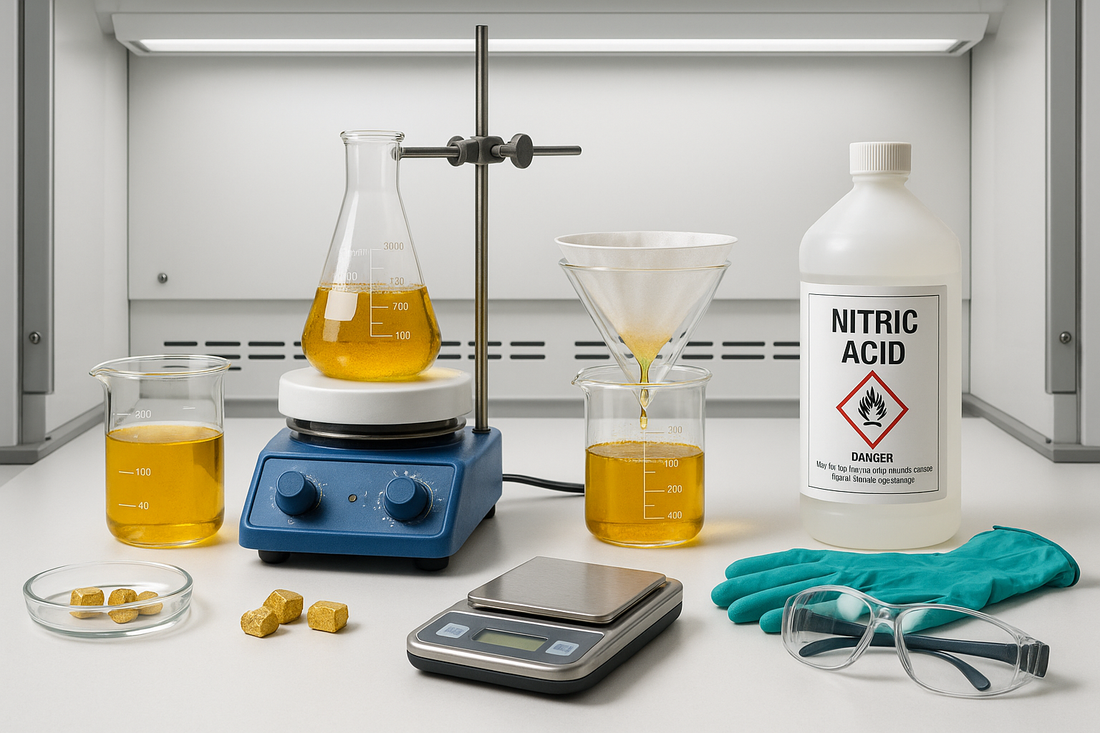How to Use Nitric Acid for Gold Refining
Gold refining is one of the most important steps for jewelers, collectors, and e-waste recyclers who want to extract pure gold from scrap jewelry, coins, or electronics. One of the key chemicals used in this process is nitric acid (HNO₃) — a strong oxidizing agent that helps dissolve base metals and prepare gold for purification.
If you’re new to refining, this guide will walk you through the basics of how nitric acid is used, along with important safety tips.
What Is Nitric Acid and Why Use It?
Nitric acid is a powerful, corrosive acid commonly used in laboratories and metal refining. In gold refining, it serves two main purposes:
Removing Base Metals: Nitric acid dissolves non-precious metals like copper, zinc, or silver, leaving behind gold that doesn’t react easily.
Forming Aqua Regia: When combined with hydrochloric acid, nitric acid creates aqua regia, a solution capable of dissolving gold completely for purification.
Safety First
Before handling nitric acid, always follow strict safety protocols:
Wear acid-resistant gloves, goggles, and apron.
Work in a fume hood or outdoors in a well-ventilated area.
Keep a neutralizing agent (like baking soda solution) nearby.
Store nitric acid in its original, acid-resistant container at room temperature, away from incompatible materials.
⚠️ Never add water to acid. Always add acid to water if dilution is required.
Step-by-Step: Using Nitric Acid in Gold Refining
1. Pre-Clean Your Scrap
Break down jewelry, coins, or electronic components to remove dirt and non-metallic materials.
Cut or file large pieces to increase surface area.
2. Dissolve Base Metals
Place your scrap in a beaker or glass container.
Cover with nitric acid and gently heat.
Base metals will dissolve, leaving behind flakes or powdery gold.
Rinse thoroughly with distilled water to wash away dissolved metals.
3. Prepare Aqua Regia (If Further Refining Is Needed)
Mix 3 parts hydrochloric acid (HCl) with 1 part nitric acid (HNO₃) carefully.
Add this solution to your gold residue until it dissolves completely.
The result is a yellow/orange liquid containing dissolved gold.
4. Neutralize Excess Nitric Acid
Dissolve urea in warm water.
Slowly add it to the aqua regia solution until fizzing stops (this means free nitric has been neutralized).
5. Precipitate the Gold
Add sodium metabisulfite (SMB) or another precipitant.
Gold will drop out of solution as a brown powder.
Let settle overnight before filtering and rinsing.
6. Dry and Melt
Dry the gold powder completely.
Melt in a crucible to form a button or bar of refined gold.
Common Mistakes to Avoid
Using too much nitric acid – this can prevent gold from precipitating later. Always neutralize excess.
Skipping the safety gear – nitric acid fumes are extremely dangerous.
Applying acid directly to jewelry – always use a test stone or proper refining setup.
Final Thoughts
Nitric acid is a powerful and essential tool for gold refining. When handled safely and correctly, it allows jewelers, refiners, and hobbyists to recover pure gold from scrap with confidence.
If you’re ready to start refining, make sure you’re working with fresh, high-purity nitric acid in a DOT-approved acid-resistant container. Pair it with the right tools — testing kits, scales, and neutralizers — to get reliable results every time.
👉 Explore our collection of gold refining supplies including nitric acid, aqua regia components, and complete testing kits.

